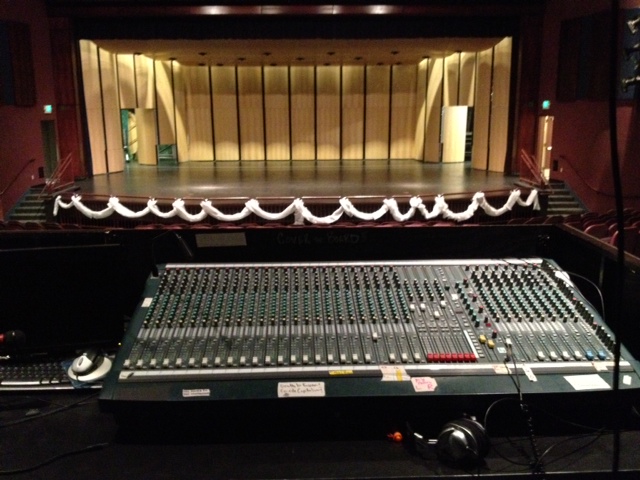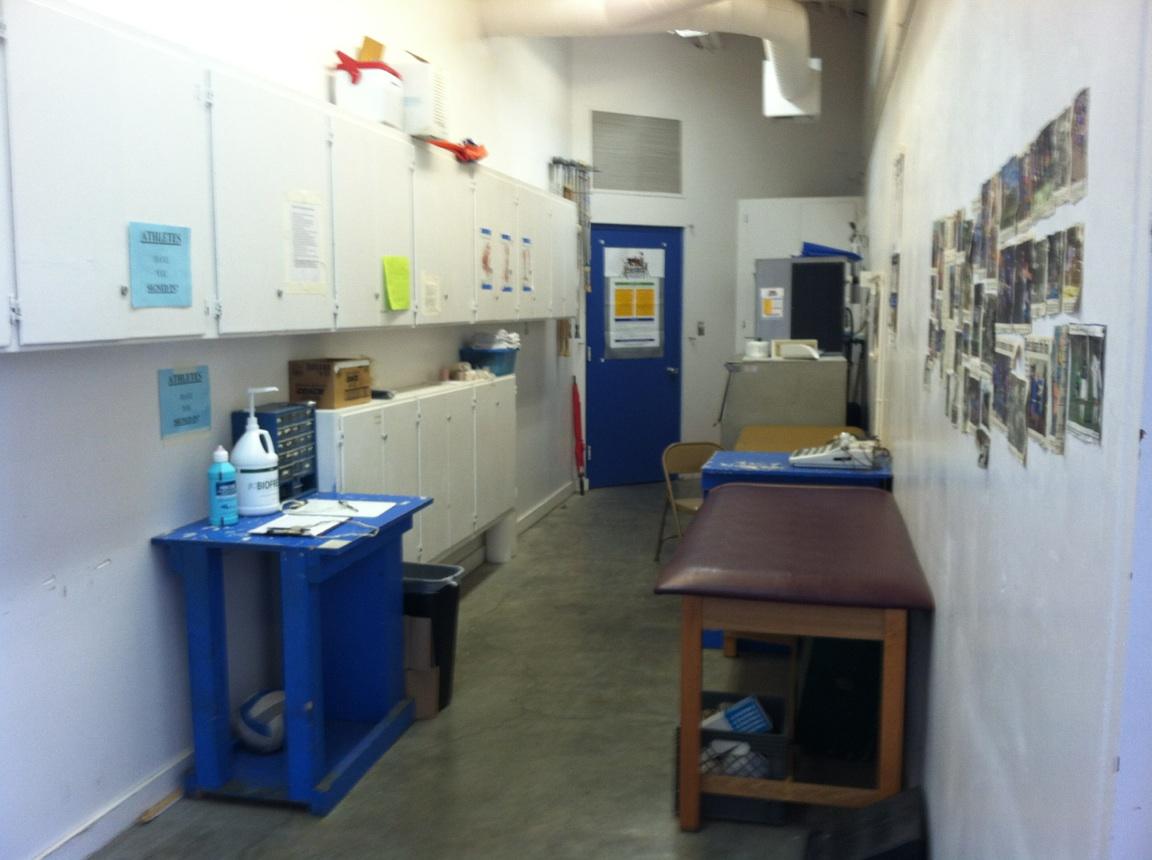Stagecraft students help behind the scenes
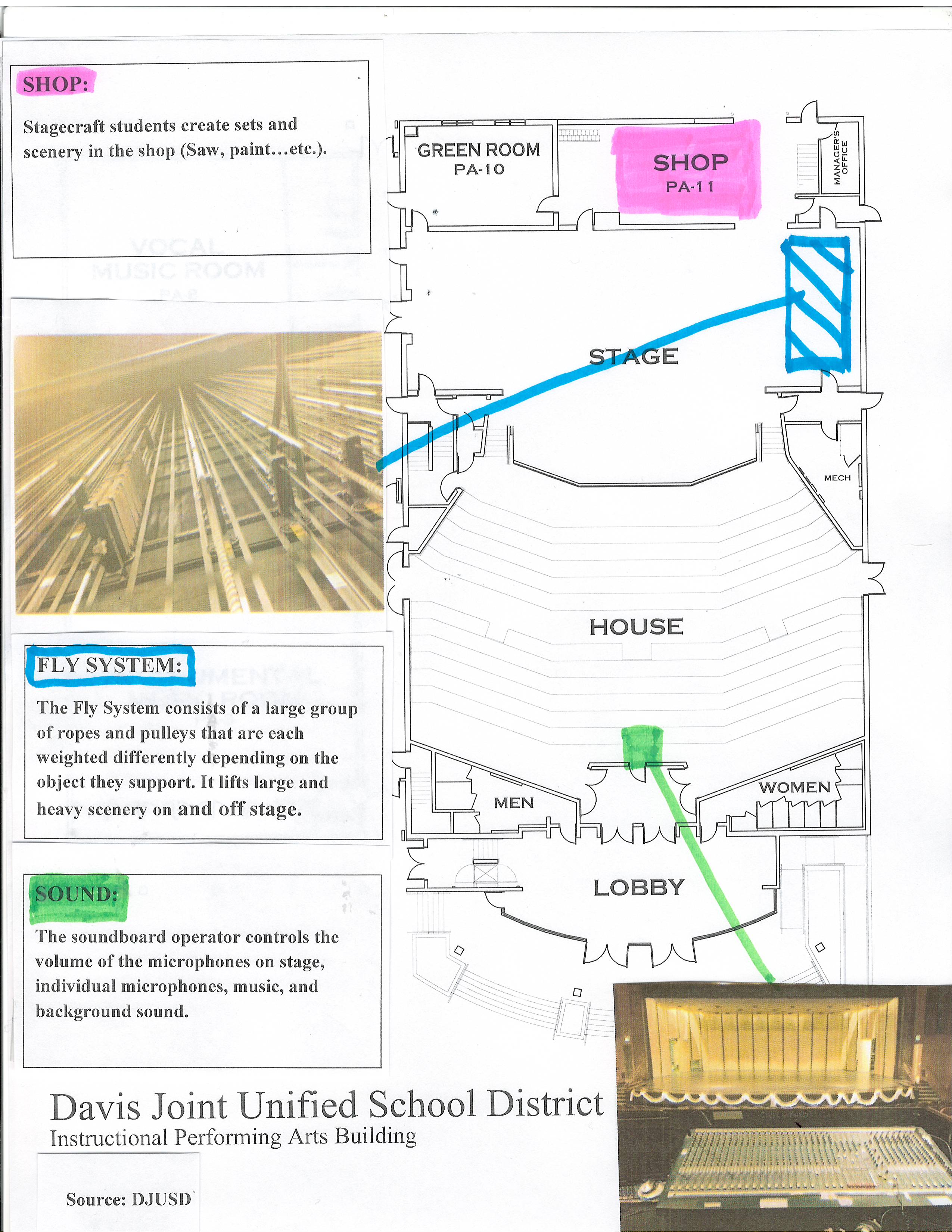
By Owen Yancher,
Bluedevilhub.com Staff–
Stagecraft teacher Kathy Peter thinks of her stagecraft classes and backstage crew much like a team.
“We have meetings, practices, run-throughs, it’s a lot like a sport,” Peter said.
Peter is also the Performing Arts Facilities Coordinator and is in charge of the Richard Brunelle Performance Hall, also known as the IPAB. The IPAB hosts all types of performances: plays, concerts, even lectures according to the DJUSD website.
However Peter is not the only one who helps manage performances.
“There are about 20 students in my stagecraft class and they all help out at different events,” Peter said.
Performances at Davis High are almost entirely student run.
“We had maybe 35 plus kids on hand putting on Pippin, and somewhere around 15 backstage,” Peter said.
Some of Peter’s students like sophomore Noah Lopez put in hours of work to get a show ready during what’s known as “tech week.” These “students put over 20 hours during tech week; it’s a lot like having a full time job.”
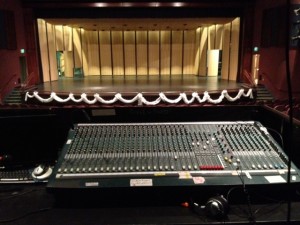
“I worked 7 a.m. until 10 p.m. every day during tech week,” Lopez said. “We make everything offstage happen.”
Professional performance halls like the Mondavi Center in Davis have their own full time backstage personnel.
Donna J. Flor, the productions manager at the Mondavi Center says there are so many jobs backstage that it is impossible to count them all.
“As technology continues to evolve, new types of backstage jobs continue to be created. At the Mondavi Center, the Production Department includes a Production Manager (myself), Assistant Production Manager, Master Carpenter, Master Electrician, Assistant Electrician, Head Audio Engineer, two Stage Managers, an Events Coordinator,” Flor said.
The list goes continues.
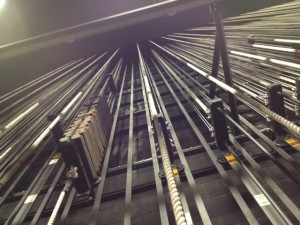
“We can work for four hours on one day, eight hours the next day, and then fifteen hours the next. We frequently work from 8 a.m. to 1a.m. (with breaks for lunch and dinner) on tech-heavy shows,” Flor said.
Fortunately, DHS performances do not require the same amount of personnel as Mondavi Center, but there are still many jobs.
Sophomore Noah Riffle, another one of Peter’s Stagecraft student’s, worked recently as an assistant stage manager at DHS Factor.
“There were two of us backstage at DHS Factor and about three other people running lights and other stuff. We would move props on and off stage and direct the curtains,” Riffle said.
Peter mentioned that “some of the other jobs we have are lighting, sound, stage management, costume, props, makeup, it’s like herding cats, there are so many jobs.”
Megan Watters has a lot of experience working behind the scenes for performances. She formerly worked as an intern for set design at the Pacific Conservatory of Performing Arts (PCPA) in Santa Maria. According to Watters “building sets can take months”.
“There’s this cool job backstage where you operate the fly system. There’s this system of pulleys that lifts some larger props and backdrops on and off the stage so the audience can’t see it,”Riffle said.
Some of Peter’s Stagecraft students feel like they don’t get enough recognition for all the work they put in. Peter has a different view.
“It kind of comes with the job. I don’t feel like recognition comes from outside of the production. If we do our job well, it’s like we don’t even exist,” Peter said.

